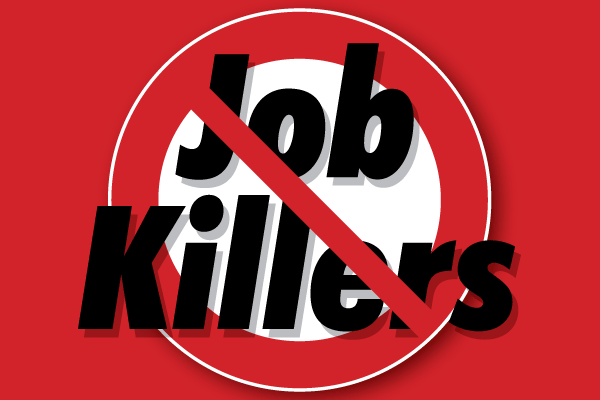
A large and diverse coalition of 150 California business representatives have joined a CalChamber-led coalition in strong opposition to AB 2200 (Kalra; D-San Jose), a job killer bill that would create an expensive government bureaucracy to finance a state-run health care system.
The bill is scheduled to be heard in the Assembly Health Committee as a Special Order on Tuesday, April 23.
AB 2200 forces all Californians into a new untested state government health plan, with no ability to opt out while eliminating Medicare for California seniors and increasing taxes at least $250 billion a year on workers, income, jobs, goods and services.
Astronomical Costs Imposed on Taxpayers
The Healthy California for All Commission recently estimated that total health care costs annually exceed $500 billion in California. This amounts to one-seventh of the gross state product and would more than double the state’s budget.
In a letter sent to legislators this week, the CalChamber explained that AB 2200 is woefully incomplete as it does not include any funding mechanism to account for the costs needed to implement a state-run health care system (CalCare). Considering that the state’s General Fund cannot come anywhere close to covering CalCare’s cost, even in surplus years, taxpaying Californians would be required to make up the shortfall, especially during California’s current deficit.
Prior single-payer fiscal analyses estimated that the system would cost more than $400 billion annually. In 2008, the Legislative Analyst’s Office (LAO) analyzed the cost of a single-payer system in California and concluded that more than $210 billion would be needed in the first year to sustain such a system and would increase up to $250 billion in subsequent years.
Even with a 12% payroll tax paid both by employers and employees under that measure, the report predicted a net shortfall of $42 billion in its first full year of implementation and even higher thereafter. Just to cover the shortfall, a 16% tax on employers and employees was estimated by the LAO, resulting in a multibillion-dollar-tax increase on Californians.
The kinds of tax increases needed to finance AB 2200 have a detrimental impact on California businesses and certainly discourage companies from growing or relocating here, the CalChamber warned in its letter.
Impacts on Physicians
AB 2200 would create a governing board that would set reimbursement rates for providers. If physicians took issue with those government-imposed rates, or if CalCare paid providers below the market average in other states, doctors may be left with little choice but to practice elsewhere.
Canada’s health care system includes government-set payment rates and Canadian physicians earn less than their American counterparts. However, CalCare is not a nationalized plan; it’s local. Thus, California physicians could choose to practice in another state with traditional payment models if they found the choice to be beneficial, the CalChamber pointed out.
Additionally, the CalCare model would have a negative impact on the physician-patient experience. Government health care is typically operated like an HMO (health maintenance organization). Patients must see their assigned primary care physician so they can delegate care, place referrals, or order testing and procedures.
Californians are covered by a variety of health plans, Medicare, or Medi-Cal and the market helps ease this provider-access issue.
However, CalCare would contribute to increased demand for a limited supply of physicians and facilities. Britain’s National Health Service is a government-run health system and the country experiences overcrowded hospitals, long waiting lists for procedures and quality of care issues. A single-payer system would undoubtedly experience the same bureaucratic outcome under AB 2200, the CalChamber said.
State-Run Health Care Rejected Before
California voters have twice rejected a government-run health care system at the ballot box — in 1994 and 2004. Additionally, CalChamber polling found that voters overwhelmingly preferred to keep their current health insurance over switching to a single-payer approach.
Voters strongly support subsidies for people who cannot afford their own health care and for those who have pre-existing health conditions, but were not ready to embrace government-run health care.

